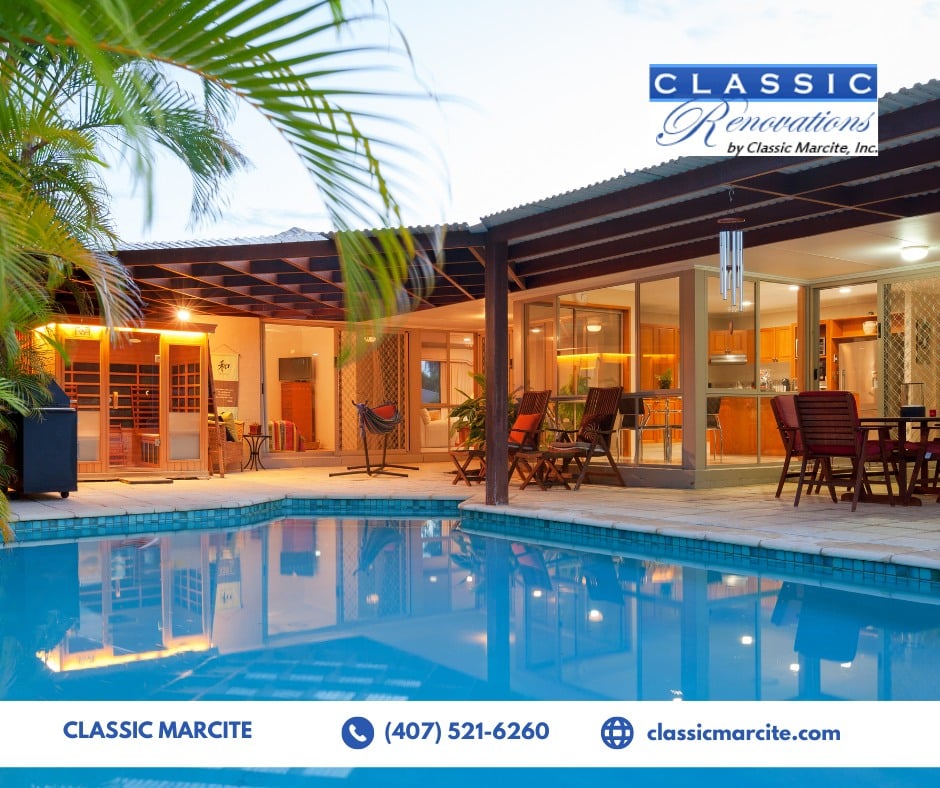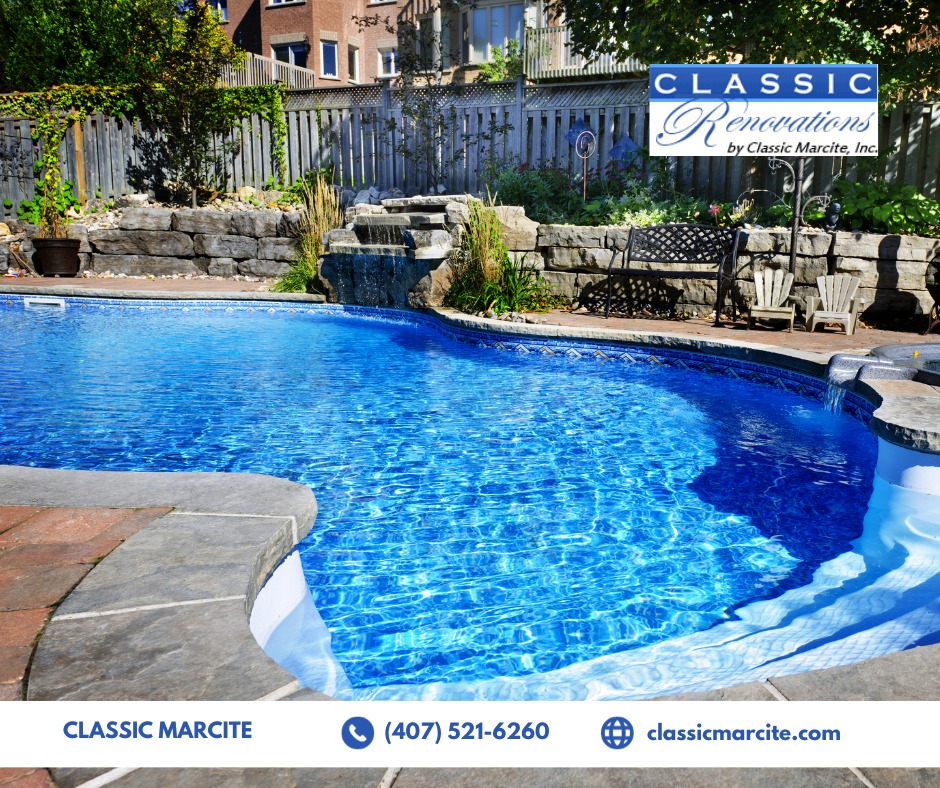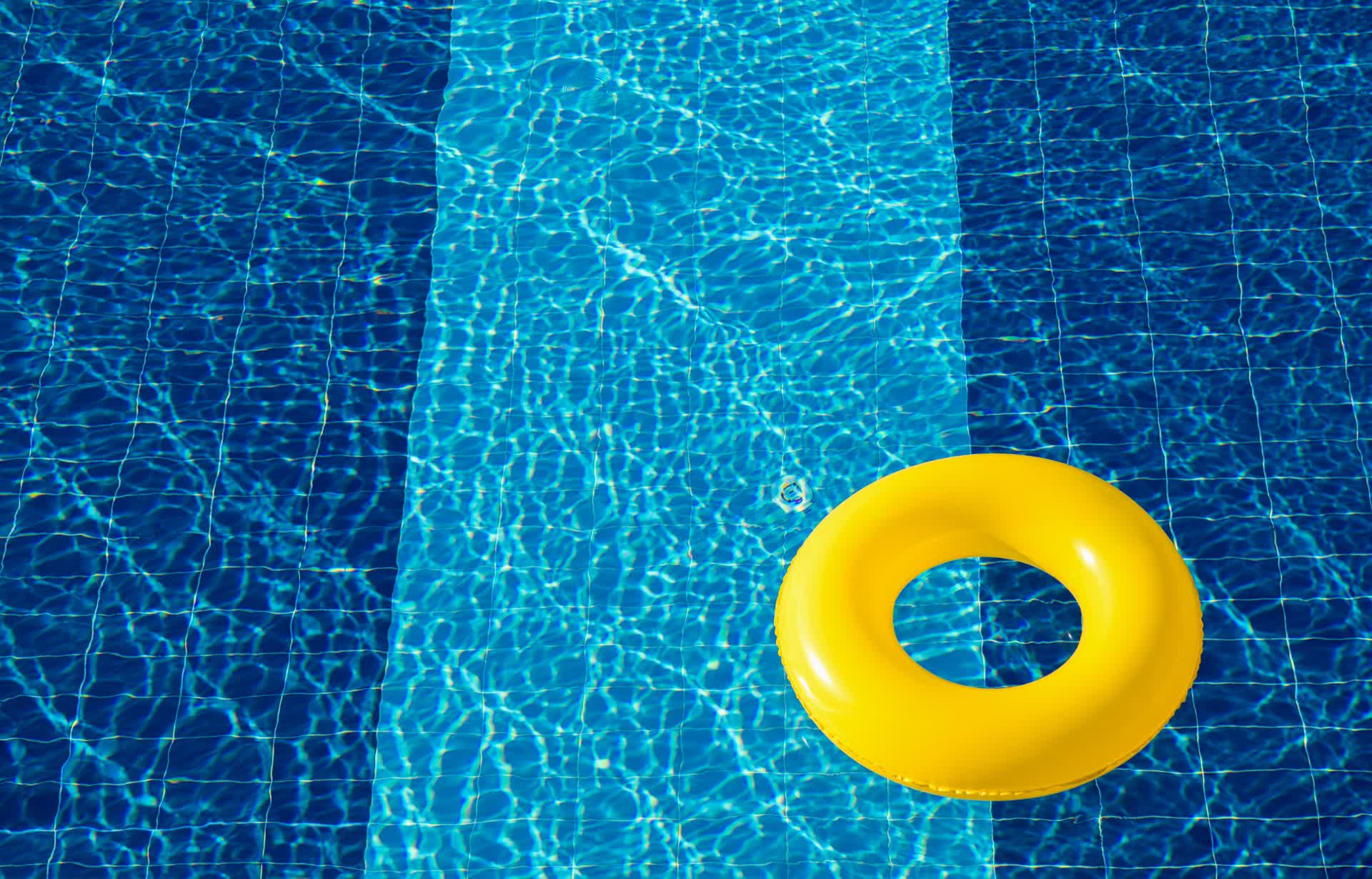When it comes to choosing the right material for pool resurfacing, Marcite has long been a popular option. Lifespan of Marcite Pools is known for its classic appearance and affordability, Marcite, a blend of white cement and marble dust, offers a smooth and aesthetically pleasing finish for pools. However, just like any other material, Marcite has a defined lifespan, and understanding this can help pool owners make informed decisions about maintenance, resurfacing, and ultimately, when it’s time to upgrade.

What is Marcite?
Marcite is a traditional plaster finish used in pool resurfacing. It has been the go-to material for decades, particularly because of its affordability and the smooth texture it provides. The mixture of white cement and marble dust results in a clean, white finish that can make any pool look inviting and well-maintained. However, its longevity is influenced by several factors, which we’ll explore in the following sections.
The Lifespan of Marcite Pools: An Overview
The typical lifespan of a Marcite pool ranges between 8 to 12 years under normal conditions. However, this can vary significantly depending on factors such as water chemistry, weather conditions, maintenance routines, and usage patterns. Understanding these factors will give you a better grasp of how to extend the life of your Marcite pool and when to consider resurfacing.

Factors Affecting the Lifespan of Marcite Pools
1. Water Chemistry and Its Impact
Maintaining balanced water chemistry is crucial to extending the lifespan of Marcite pools. The chemical balance, including pH levels, alkalinity, and calcium hardness, directly affects the durability of the Marcite surface.
- pH Levels: The pH level should ideally be between 7.2 and 7.8. If the pH is too low, the water becomes acidic, which can erode the Marcite finish. Conversely, if the pH is too high, scaling can occur, leading to rough surfaces.
- Alkalinity: Alkalinity helps stabilize pH levels. Keeping it between 80 to 120 parts per million (ppm) is recommended. Low alkalinity can cause the pH to fluctuate, while high alkalinity can cause the water to become cloudy and increase scaling.
- Calcium Hardness: This should be maintained between 200 to 400 ppm. Low calcium hardness can lead to the water leaching calcium from the Marcite, weakening the surface and leading to premature wear.
2. Weather Conditions and Environmental Factors
The environment plays a significant role in the lifespan of Marcite pools. Factors such as temperature, humidity, and exposure to the sun can impact the longevity of the Marcite surface.
- Temperature Fluctuations: Extreme temperature changes can cause the Marcite to expand and contract, leading to cracks and surface degradation over time.
- Sun Exposure: Prolonged exposure to UV rays can cause the Marcite to fade and weaken. Using a pool cover when not in use can help protect the surface.
- Humidity Levels: High humidity can lead to the growth of algae and mold on the pool surface, which can degrade the Marcite if not properly maintained.
3. Maintenance Routines
Regular maintenance is essential in preserving the lifespan of a Marcite pool. A proactive approach can prevent minor issues from becoming significant problems.
- Routine Cleaning: Regular brushing and vacuuming help prevent the buildup of debris and algae, which can cause staining and surface damage.
- Timely Repairs: Addressing cracks, chips, and leaks as soon as they are noticed can prevent further damage and extend the life of the pool surface.
- Professional Inspections: Regular professional inspections can identify potential issues early on, allowing for timely intervention and maintenance.
4. Usage Patterns
How frequently the pool is used also affects the lifespan of Marcite. Heavy usage can lead to more wear and tear on the surface, necessitating more frequent maintenance and potentially reducing the overall lifespan.
- High Traffic: Pools that are heavily used, especially by large groups or for commercial purposes, may see more rapid deterioration of the Marcite surface.
- Chemical Usage: Overuse of pool chemicals, particularly harsh ones like chlorine, can weaken the Marcite over time, leading to premature resurfacing needs.

Signs That Your Marcite Pool Needs Resurfacing
Even with the best care, Marcite will eventually need to be resurfaced. Recognizing the signs early can help you plan for resurfacing before significant damage occurs.
1. Rough Surface Texture
One of the first signs that your Marcite pool may need resurfacing is a rough texture. As the surface wears down, it becomes coarse, which can be uncomfortable for swimmers and a sign that the material is degrading.
2. Staining and Discoloration
Over time, Marcite can begin to stain and discolor, especially if water chemistry is not well-maintained. While some staining can be removed with cleaning, persistent discoloration is a clear indication that resurfacing is needed.
3. Cracks and Leaks
Cracks in the pool surface are a significant sign of deterioration. These can lead to leaks, which not only waste water but can also cause structural damage to the pool if not addressed promptly.
4. Frequent Algae Growth
If you find that algae are growing more frequently on your pool surface despite regular cleaning, it may be because the Marcite is deteriorating, providing an ideal environment for algae to thrive.

Steps to Extend the Lifespan of Your Marcite Pool
While resurfacing is inevitable, there are steps you can take to extend the lifespan of your Marcite pool.
1. Regular Water Testing and Balancing
Regularly testing your pool’s water chemistry and making necessary adjustments is crucial. This helps prevent the chemical imbalances that can erode or damage the Marcite.
2. Use of Pool Covers
Using a pool cover when the pool is not in use can protect the Marcite from UV rays and environmental debris, reducing wear and tear.
3. Scheduled Professional Maintenance
Engage in scheduled professional maintenance to catch any issues early on. Professionals can spot potential problems that may not be immediately obvious to the average pool owner.
4. Mindful Usage
Being mindful of how often and in what manner the pool is used can help preserve the surface. Encourage gentle use and limit the introduction of harsh chemicals.
Cost Considerations for Marcite Resurfacing
When the time comes to resurface, understanding the cost factors involved can help you plan and budget effectively.
1. Material Costs
Marcite is one of the more affordable options for pool resurfacing, but costs can vary based on location, pool size, and the specific materials used.
2. Labor Costs
Labor is a significant part of the resurfacing cost. Hiring experienced professionals is crucial to ensure a quality finish that will last another decade or more.
3. Additional Repairs
If there are significant cracks, leaks, or structural issues, these will add to the cost of resurfacing. It’s essential to address these during the resurfacing process to avoid future problems.
4. Long-Term Savings
While resurfacing represents a significant investment, it can save you money in the long run by preventing more serious damage and extending the life of your pool.
FAQs: Lifespan of Marcite Pools
Q1: How often should a Marcite pool be resurfaced?
A1: Typically, Marcite pools should be resurfaced every 8 to 12 years, depending on factors like maintenance, water chemistry, and environmental conditions.
Q2: What are the signs that my Marcite pool needs resurfacing?
A2: Signs include a rough surface texture, persistent staining, cracks, leaks, and frequent algae growth, indicating that the surface is degrading.
Q3: Can I extend the lifespan of my Marcite pool with regular maintenance?
A3: Yes, regular water testing, proper chemical balancing, routine cleaning, and professional inspections can help extend the lifespan of a Marcite pool.
Q4: What are the cost factors involved in Marcite resurfacing?
A4: Costs include materials, labor, and any additional repairs needed. Marcite is affordable, but overall costs depend on the size of the pool and the extent of the resurfacing required.
Q5: Does heavy usage affect the lifespan of a Marcite pool?
A5: Yes, heavy usage can lead to more wear and tear, reducing the overall lifespan. Mindful usage and proper maintenance are key to prolonging the surface’s durability.
Q6: What role does water chemistry play in the lifespan of Marcite?
A6: Water chemistry is crucial; imbalances in pH, alkalinity, and calcium hardness can lead to the erosion or scaling of the Marcite surface, shortening its lifespan.
Conclusion
Understanding the lifespan of Marcite pools and the factors that influence it allows pool owners to make informed decisions about maintenance and resurfacing. By recognizing the signs of wear and taking proactive measures, you can extend the life of your Marcite pool, ensuring it remains a beautiful and functional centerpiece of your property for years to come.

